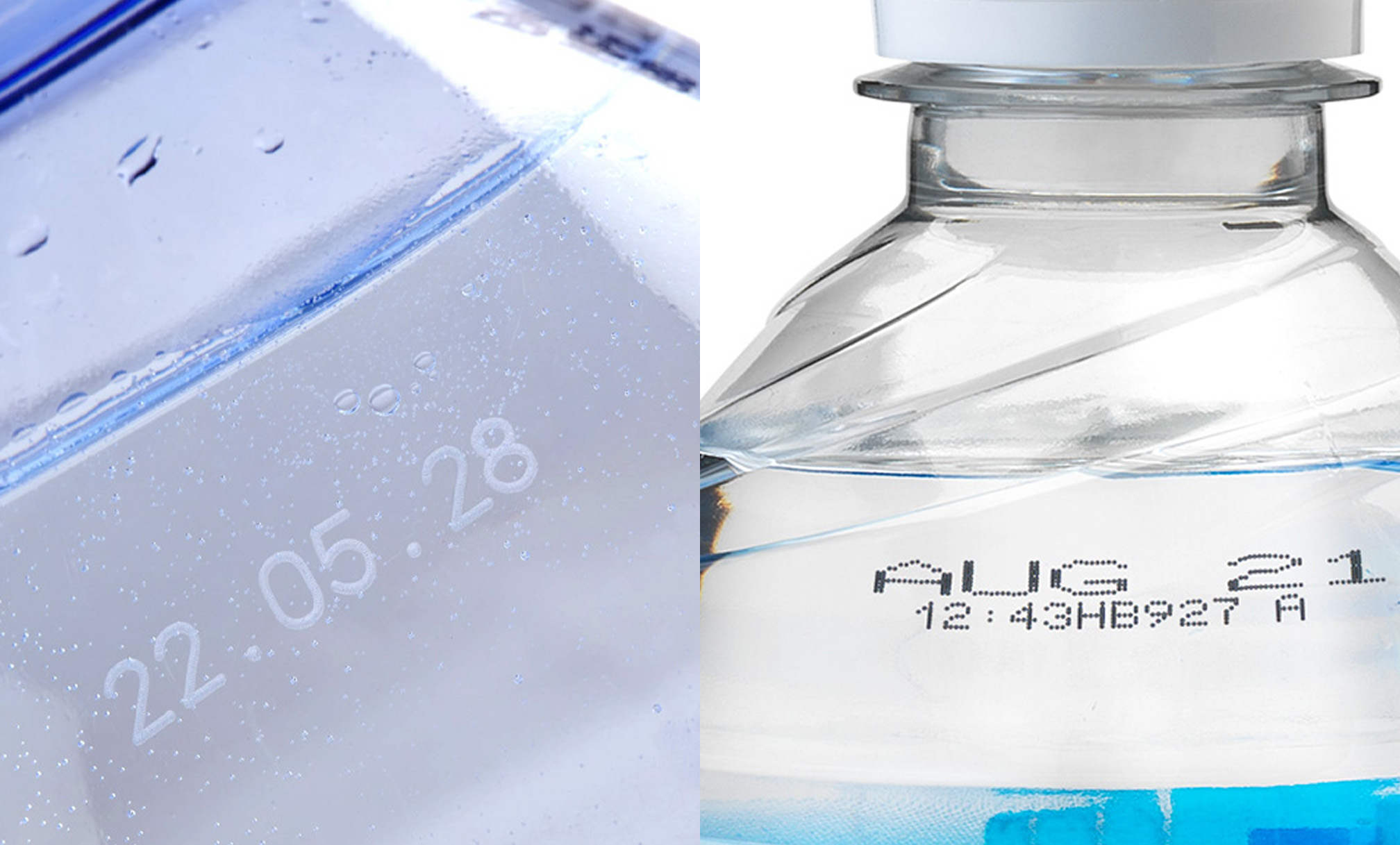
Which coding technology is right for your packaging line?
When it comes to coding and marking on your packaging line, one choice can make all the difference: Continuous inkjet (CIJ) printing or laser marking? These two technologies are widely used to add essential information—like barcodes, batch numbers, and logos—directly to products. But how do you determine which one is right for your production needs? Let’s explore the key differences, benefits, and considerations to help you make the best choice.
Why the choice matters
Your coding and marking technology is more than just a tool—it’s a critical factor in helping to ensure product compliance, traceability, and branding. Both CIJ and laser marking are highly effective non-contact methods, but they differ in cost, material compatibility, and long-term performance. Here’s how they stack up.
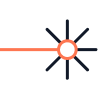 Laser marking: Permanent, durable, and high-quality codes
Laser marking: Permanent, durable, and high-quality codes
Laser marking uses focused beams of light to alter the surface of a material, creating high-quality, permanent marks that are resistant to wear and tear. It is ideal for industries that require durable, legible codes for compliance, branding, and traceability.
Choosing the right laser: CO₂, fiber, or UV
Laser marking systems for package coding are available in three main types, each designed to perform on specific materials:
| Laser type | Ideal for | Sample applications |
|---|---|---|
| CO₂ lasers | • Non-metallic and organic materials, such as paper, cardboard, glass, wood, and certain plastics. | 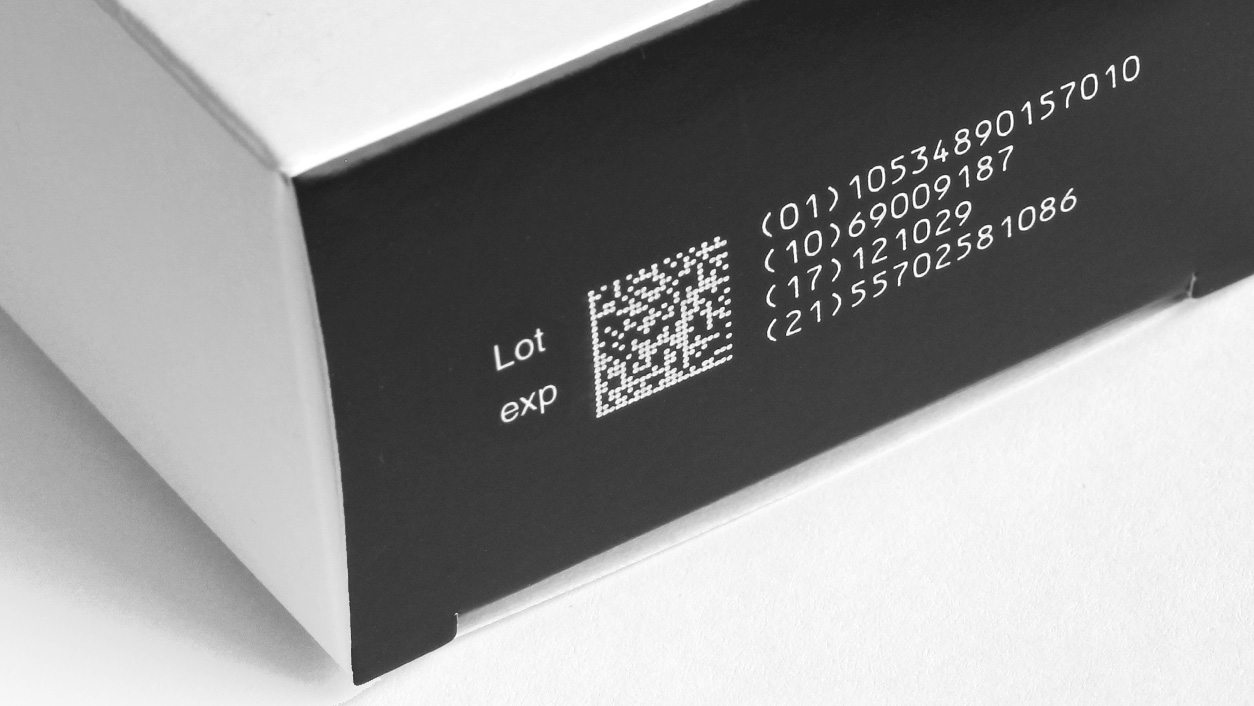 |
| • Frequently used in the food and beverage industry to mark codes on packaging like paperboard cartons, as well as PET and glass bottles. | 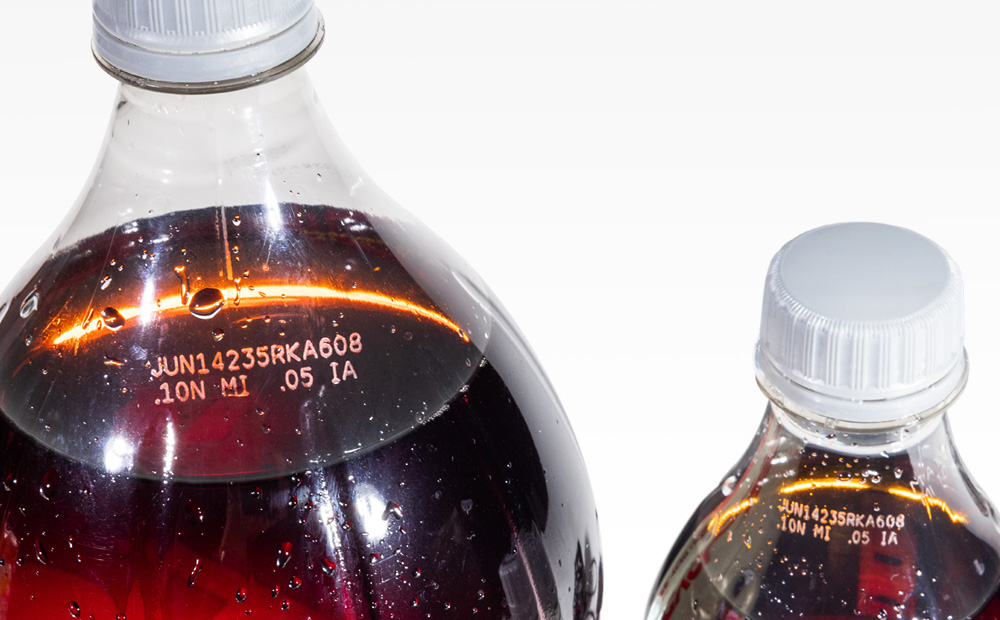 | |
| Fiber lasers | • Marking on food and beverage packaging, including cans, flexible films, foils, and labels. | 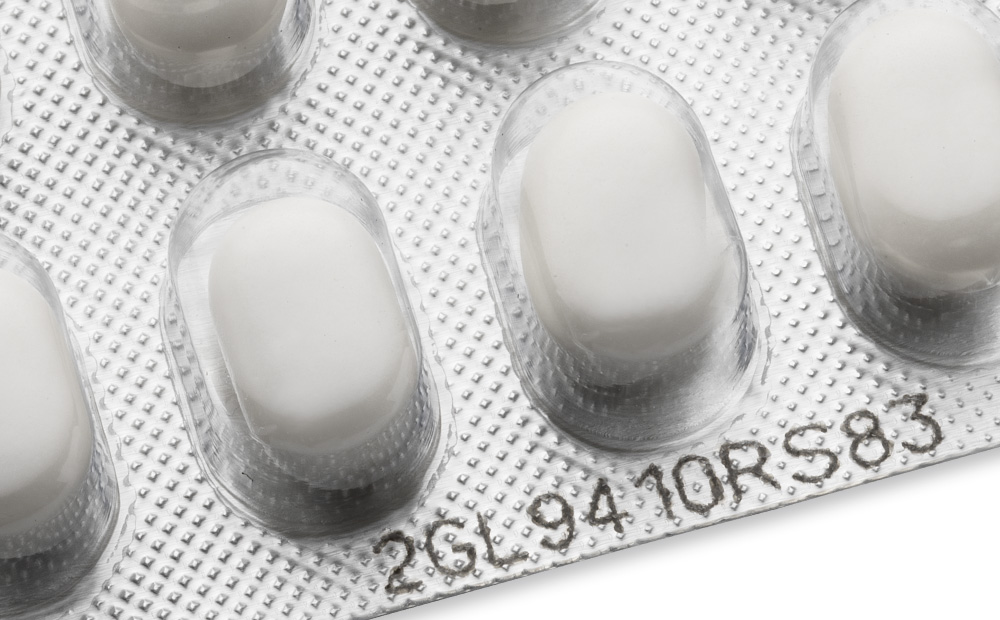 |
| • Frequently used in the automotive, aerospace, and electronics industries where permanent, high-contrast marks on durable materials are essential: high-density plastic and metal, including stainless steel, aluminium, brass; automotive parts; and electronic components. | 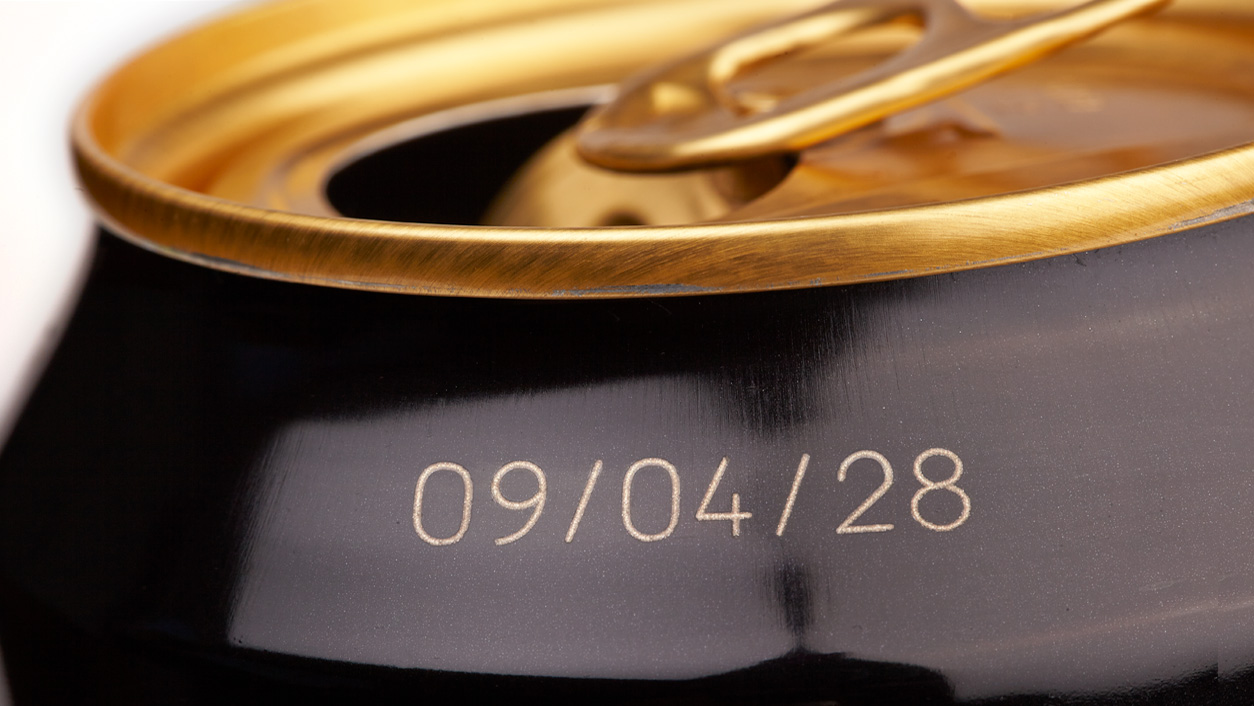 | |
| UV lasers | • Heat-sensitive materials, such as medical-grade plastics, soft polymers, and certain types of glass. | 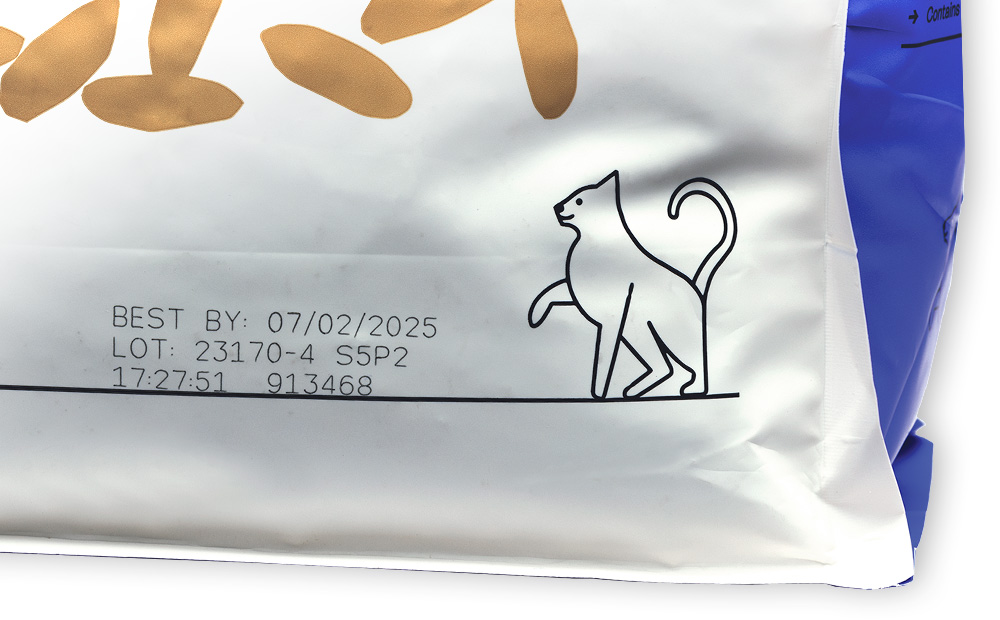 |
| • Ideal for marking on films, foils and labels, and white HDPE containers. | 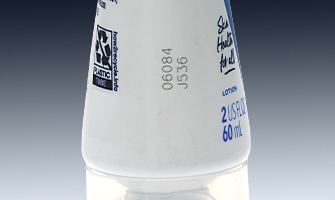 | |
| • Frequently used in the pharmaceutical and healthcare industries for precise coding of medical devices and delicate materials like syringes and blister packs. |
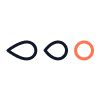 Continuous inkjet (CIJ)
Continuous inkjet (CIJ)
Continuous inkjet (CIJ) printing is a proven technology that excels in all production environments, from low to high speeds. It uses a continuous stream of ink droplets to create variable data, such as dates, lot codes, and barcodes, directly onto products or packaging.
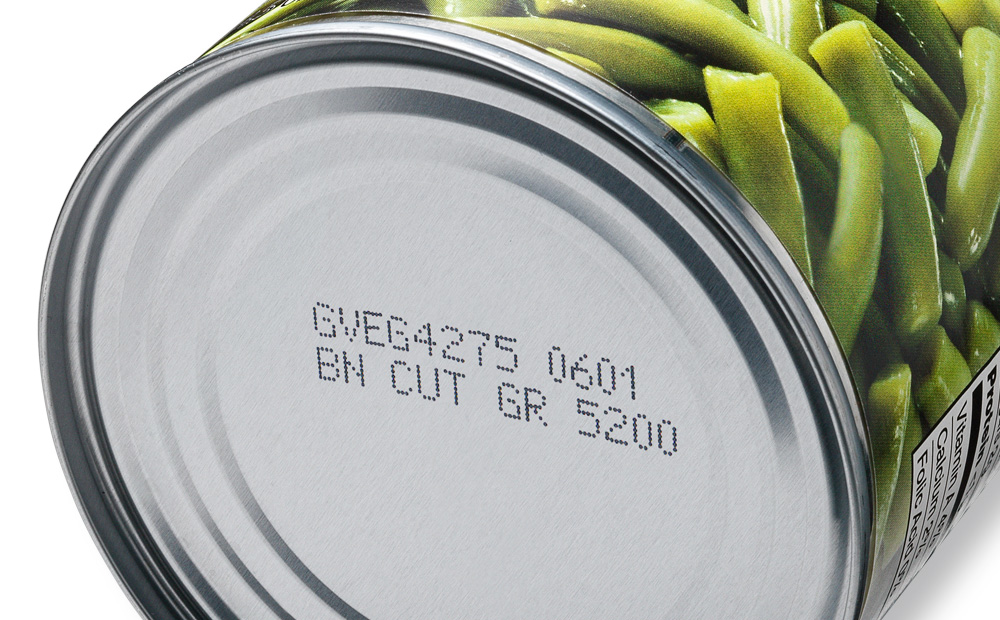
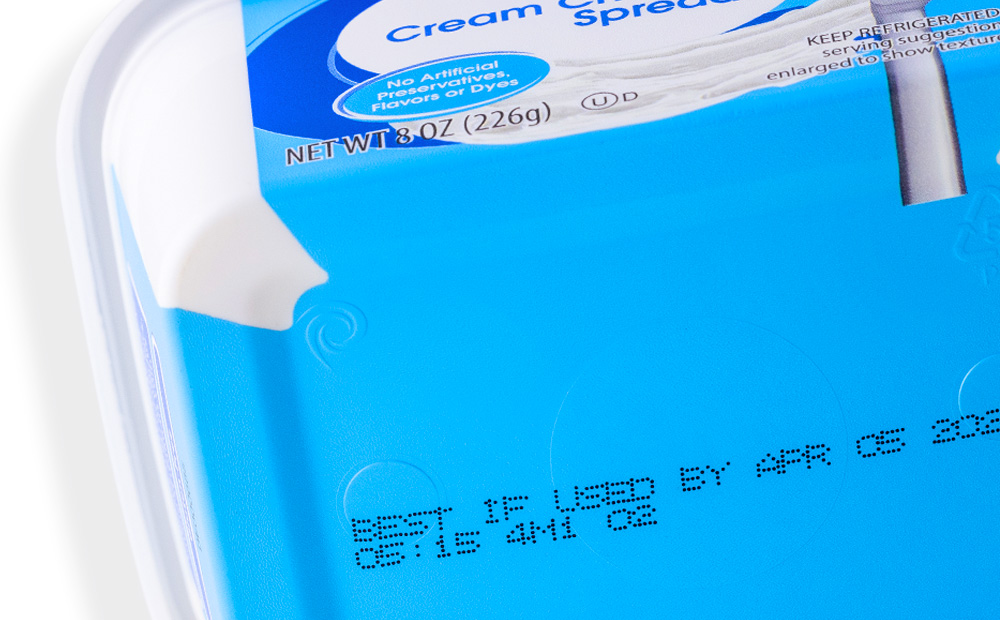
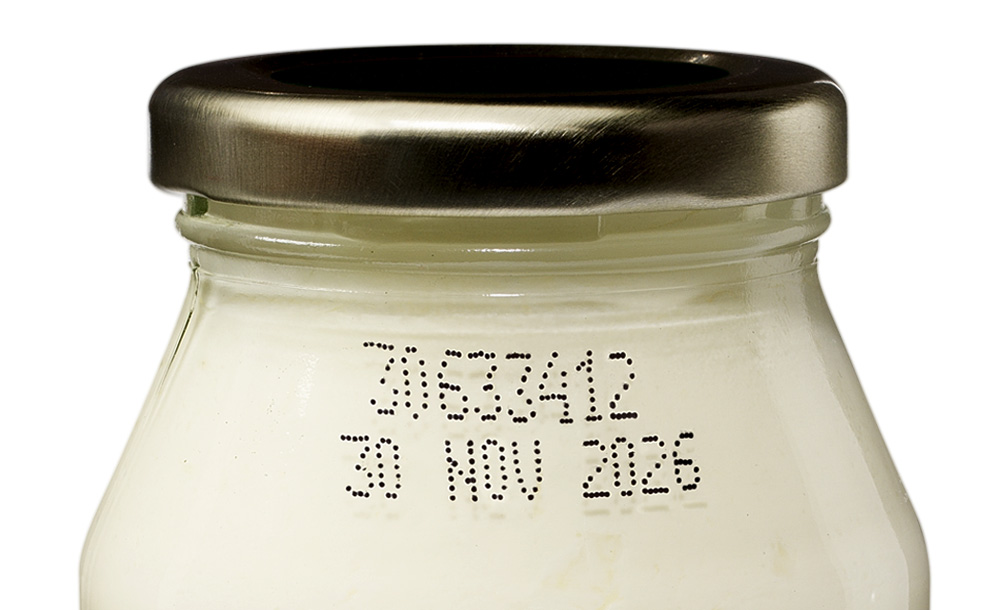
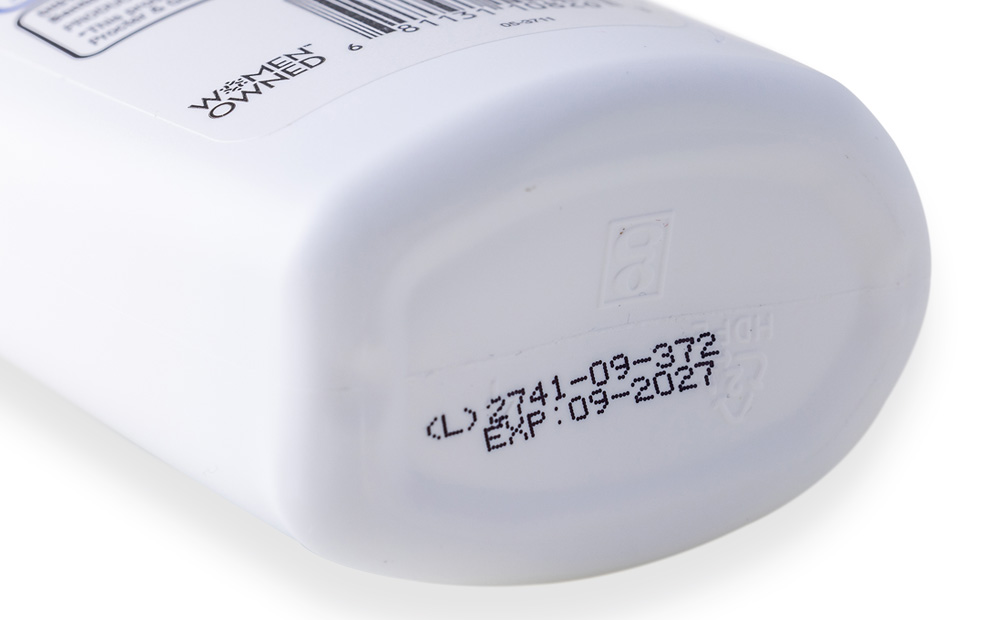
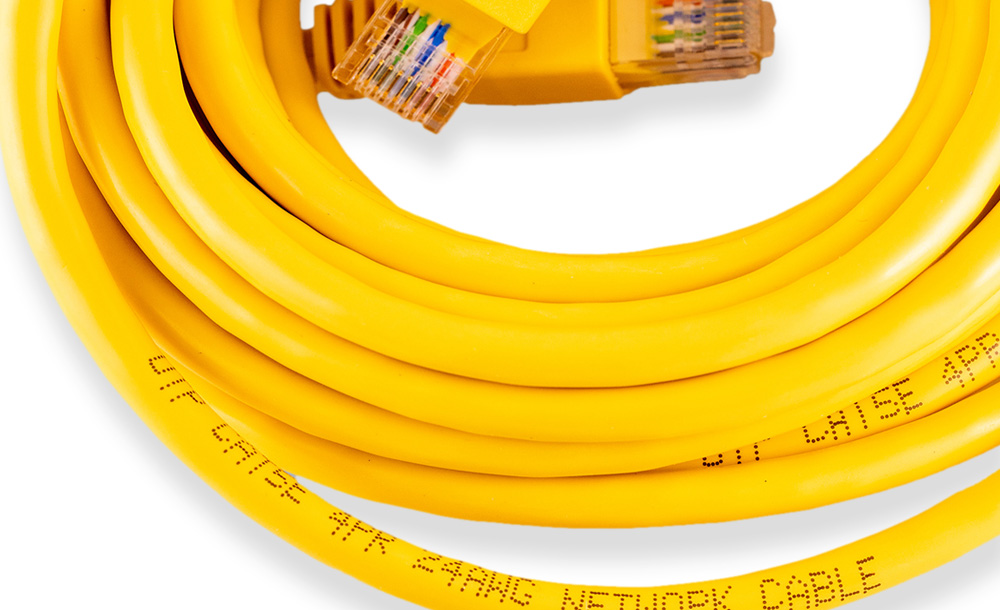
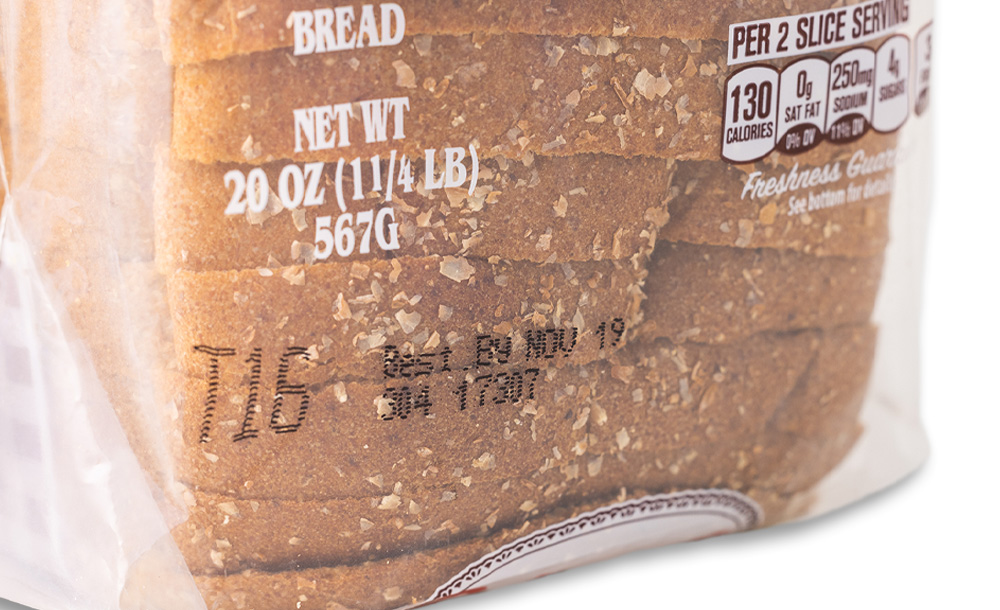
Key features of CIJ printing
- Material compatibility: Prints on a wide range of substrates, including plastic, metal, glass, paper, cardboard, wood, and more.
- Versatile application: Suitable for flat, curved, and irregularly shaped surfaces, making it highly adaptable for diverse product types.
- High-speed performance: Capable of producing up to five lines of text at high production speeds.
- Proven reliability: Widely used in industries such as food and beverage, pharmaceuticals, and consumer goods to print essential product information.
Your best fit: Laser or CIJ?
Key factors to consider
When choosing between continuous inkjet (CIJ) and laser marking technologies, it’s crucial to assess how each solution aligns with your production needs, budget, and sustainability goals. Compare some key factors:
Durability
![]() Laser marking: Produces permanent, tamper-proof marks that are resistant to fading, smudging, or removal. These marks are ideal for traceability and can only be removed by damaging the product’s surface.
Laser marking: Produces permanent, tamper-proof marks that are resistant to fading, smudging, or removal. These marks are ideal for traceability and can only be removed by damaging the product’s surface.
![]() CIJ printing: Various high-adhesion inks are designed to withstand scuffs, scratches, sun, and moisture on product surfaces. Methods that promote permanent CIJ marks include heat curing, overcoat varnishing, and UV curing.
CIJ printing: Various high-adhesion inks are designed to withstand scuffs, scratches, sun, and moisture on product surfaces. Methods that promote permanent CIJ marks include heat curing, overcoat varnishing, and UV curing.
Material compatibility
![]() Laser marking: Three advanced and versatile laser technologies for marking a range of surfaces:
Laser marking: Three advanced and versatile laser technologies for marking a range of surfaces:
- CO₂ lasers: Perfect for paper, glass, wood, and other organic materials.
- Fiber lasers: Exceptional for metals, hard plastics, and other durable surfaces.
- UV lasers: Ideal for heat-sensitive materials like flexible films and mono-materials, while also excelling on glass, metal, and hard plastics.
![]() CIJ printing: Highly versatile, capable of printing on virtually any substrate, including flexible films, glass, metal, plastics, and even curved surfaces.
CIJ printing: Highly versatile, capable of printing on virtually any substrate, including flexible films, glass, metal, plastics, and even curved surfaces.
Cost and maintenance
![]() Laser marking: While laser systems involve a higher upfront investment, they require minimal maintenance thanks to their durable design with fewer moving parts and no consumables like inks or solvents. Additionally, production lines experience fewer interruptions for maintenance, which can lead to significant time and cost savings over the long term.
Laser marking: While laser systems involve a higher upfront investment, they require minimal maintenance thanks to their durable design with fewer moving parts and no consumables like inks or solvents. Additionally, production lines experience fewer interruptions for maintenance, which can lead to significant time and cost savings over the long term.
![]() CIJ printing: More cost-effective initially, but CIJ requires ongoing ink replenishment, periodic servicing, and regular maintenance to ensure optimal performance.
CIJ printing: More cost-effective initially, but CIJ requires ongoing ink replenishment, periodic servicing, and regular maintenance to ensure optimal performance.
Print quality
![]() Laser marking: Delivers crisp, high-resolution, high-contrast marks, including 1D and 2D codes, logos, and multi-line text.
Laser marking: Delivers crisp, high-resolution, high-contrast marks, including 1D and 2D codes, logos, and multi-line text.
![]() CIJ printing: Produces reliable and readable dot-matrix codes. Micro-sized, high-resolution codes are possible with select printers. CIJ inks are available in a variety of colors and with unique properties including color changing and invisible/fluorescing.
CIJ printing: Produces reliable and readable dot-matrix codes. Micro-sized, high-resolution codes are possible with select printers. CIJ inks are available in a variety of colors and with unique properties including color changing and invisible/fluorescing.
Speed and integration
![]() Laser marking: Excels in compact spaces and produces high-quality codes at ultra-fast speeds, making it the ideal solution for high-volume production lines.
Laser marking: Excels in compact spaces and produces high-quality codes at ultra-fast speeds, making it the ideal solution for high-volume production lines.
![]() CIJ printing: Ideal for ultra-high-speed applications, such as beverages, pharmaceuticals, and packaged goods, with flexible printhead configurations that allow printing on the top, side, or bottom of products.
CIJ printing: Ideal for ultra-high-speed applications, such as beverages, pharmaceuticals, and packaged goods, with flexible printhead configurations that allow printing on the top, side, or bottom of products.
Sustainability
![]() Laser marking: No reliance on consumables like ink, ribbons, or cartridges. This reduces waste and minimizes the environmental impact of disposable materials.
Laser marking: No reliance on consumables like ink, ribbons, or cartridges. This reduces waste and minimizes the environmental impact of disposable materials.
![]() CIJ printing: Modern CIJ printers are designed to use ink efficiently, minimizing waste during the coding process.
CIJ printing: Modern CIJ printers are designed to use ink efficiently, minimizing waste during the coding process.
By carefully evaluating these factors, businesses can make an informed decision about which marking technology best suits their operational requirements and long-term objectives.
The decision between CIJ and laser marking comes down to your specific production needs:
 Choose laser marking if you require durable, high-quality marks that prioritize traceability, compliance, and long-term cost savings.
Choose laser marking if you require durable, high-quality marks that prioritize traceability, compliance, and long-term cost savings.
 Choose CIJ printing for a cost-effective, versatile solution that works across a variety of substrates, whether you’re running low, mid-range, or high-speed production lines.
Choose CIJ printing for a cost-effective, versatile solution that works across a variety of substrates, whether you’re running low, mid-range, or high-speed production lines.
Need help deciding? Videojet has you covered.
At Videojet, we recognize that no two production lines are the same. Whether you need versatile coding for a variety of substrates or permanent marking for traceability and compliance, our team of experts is here to assist. From evaluating your production line to providing sample testing, we’ll help you find the coding solution that fits your unique needs.
Contact a Videojet product expert today for a free consultation or sample testing. Let us help you find the perfect coding and marking solution to keep your production line moving.
Stay ahead with real-time updates on the latest news:
